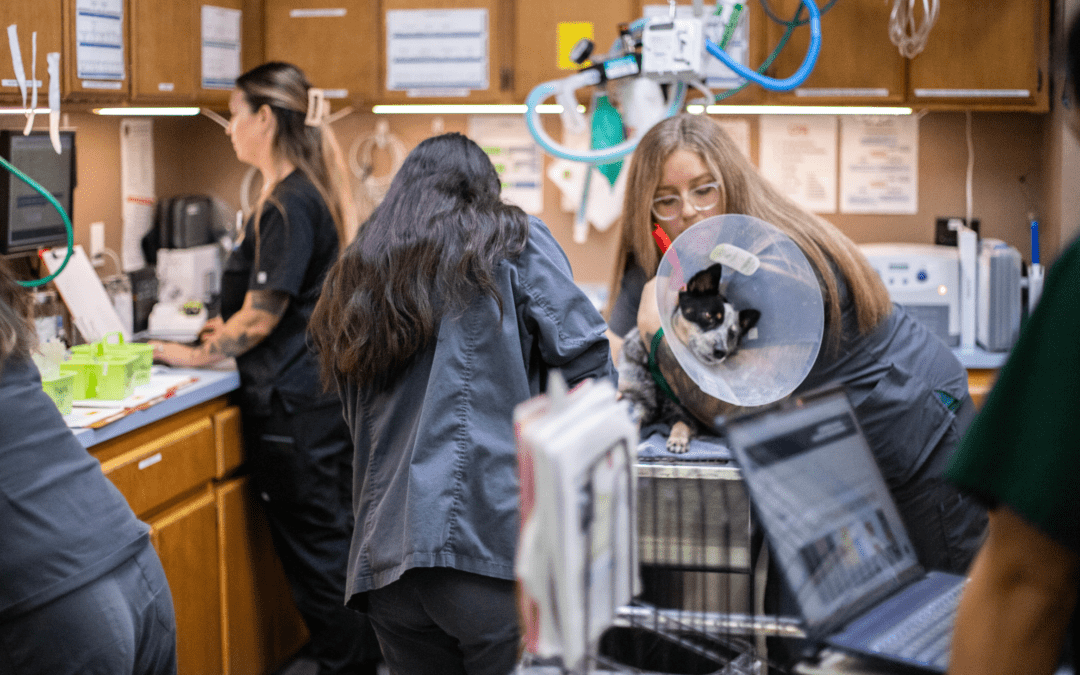Difficult clients have always been a part of clinic culture. Since the pandemic’s start, however, practices have seen increasing numbers of genuinely toxic clients: People willing to use abusive language with team members, start inflammatory conflicts via social media, or even threaten violence. Determining the best way to confront these situations is often daunting. That’s why we dove into the topic in our latest Simple, Interrupted podcast. We sat down with Dr. Cyndie Courtney, speaker, writer, international consultant on workplace conflict, and founder of The Jerk Researcher, and Josh Vaisman, co-founder and lead positive change agent at Flourish Veterinary Consulting. They offered their advice on how to diffuse those stress-inducing situations and set up boundaries to help prevent conflicts from arising in the first place.
Avoiding psychological bias
How often have you used the phrase “that’s just who that person is” when attempting to make sense of a toxic client? It helps your team shift the blame for the situation to personality traits. But that psychological bias creates MORE of a problem, and it can continue to foster the bad blood that led to the conflict in the first place.
Dr. Courtney recommends that you adjust your perspective to the situation because it has more to do with the person’s attitude than you might think. She suggests you teach your team to recognize the person’s behavior instead of their personality. “Maybe that new puppy is driving them up the wall,” she says. That could explain why they’re so frustrated and short with your staff.
And Josh agrees. You can’t change a person, but you CAN alter their behavior. When you begin taking the “person” out of the equation, your bias disappears. And you’re more likely to get to the heart of the conflict.
Working with cognitive empathy
The veterinary field focuses heavily on emotional empathy, but that’s psychologically expensive and leads to burnout. When facing a toxic client, you DON’T want to give the impression that you’re condoning their poor behavior. Instead, you want to reach for cognitive empathy: remember YOUR perspective in the discussion.
As Dr. Courtney suggests, find your “kitty zen.” Your brain reacts to verbal conflict as it would to a physical threat. So you need to calm yourself as you would when dealing with an angry cat.
Josh stresses the need for everyone to work on their active listening skills. “Active listening can come across as patronizing” when it isn’t done properly. Remember that anxious people don’t react with rationality. Learn to repeat the exact words you hear with the same emotional intonation. And don’t forget to rephrase things to emphasize that you understand the client’s underlying need.
Creating a client code of conduct
Rudeness from clients leads to stress and withdrawal, resulting in team members wanting to leave the field. Without proper support, this can manifest as toxic behaviors among your employees. You need to create your boundaries as firmly—and gently—as possible.
Luckily there are varied resources to help guide you:
- The Gottman’s Sound Relationship Workplace is based on marriage research but helps people create positive experiences
- The AVMA provides a helpful guide for establishing a client code of conduct
The more you empower your team and provide them with applicable skills, the better prepared they’ll be to handle toxic client interactions. And don’t forget to solicit GOOD interactions as much as possible. Nothing offsets a bad experience quite like positive feedback!
Listen to the latest episode of Simple, Interrupted on your favorite podcast app, or down below:






